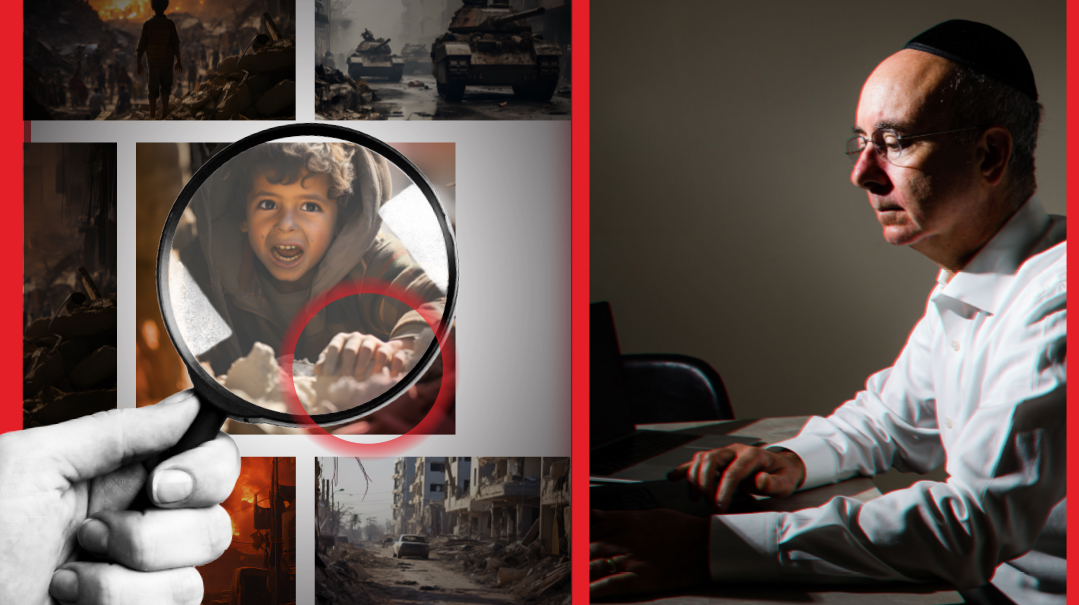Verify, Then Trust
| January 9, 2024Forensics expert David Notowitz zeroes in on lies and disinformation

Photos: Elchanan Kotler, Personal archives
During these days of so many agenda-driven fake news reports coming out of Gaza and Southern Lebanon, it’s more important than ever to ascertain that the video you’re watching isn’t some doctored-up Hamas-sponsored clip. That’s why David Notowitz, a nationally recognized audio and video forensics expert, is determined to help you fight the lies and spot the misinformation before you start believing it yourself
IN mid-December, a video allegedly showing Israel Defense Forces soldiers running over civilians at the Kamal Adwan Hospital in Gaza blew up online. One headline read, “Bulldozed & Buried Alive: Israel Army Slammed for Deadly Raids at Gaza’s Kamal Adwan Hospital,” while Al Jazeera put out a piece called, “People ‘buried alive’ outside Gaza hospital during Israeli raid.”
The only problem with the story? It was completely false. A fact-check by Reuters found that the alleged video was actually from Egypt in 2013, when authorities used a bulldozer to disperse a Cairo sit-in by supporters of ousted President Mohamed Morsi.
The bulldozing video is just one example of the many false videos, images, and news reports that have been widely spread in the war of information happening online since the war against Hamas started on the ground.
Since October 7, David Notowitz, an audio and video forensics expert and founder of the Los Angeles-based National Center for Audio and Video Forensics, has made it a point to fight the misinformation and educate people on how to spot AI images, deepfake videos, and false news reports. He appeared on Fox News to discuss the Gaza hospital bombing headlines, telling the audience, “The first thing to think about when you’re looking at videos, stills, images, documents, anything coming in, any news form, is: Do you trust the source? Is this source proven to be someone that you can generally trust over the long term? I think that’s going to be the bottom line now.”
Notowitz has also written op-eds for publications where he talks about spotting misinformation and the importance of sharing these conclusions with family members, friends, and members of the larger Jewish community.
“Anybody with a computer can post whatever they want and act with authority online,” he says. “Since October 7, there has been an unrelenting campaign against Israel. There are nefarious and coordinated efforts to undermine Israel’s positive image with a barrage of fake videos, false headlines, AI images, and misrepresented footage.”
As an audio and video forensics expert, Notowitz spends much of his workday analyzing footage and evidence to bring truth to light, both for clients facing charges and attorneys who need assistance with cases. Notowitz, who was actually in Israel this Yom Tov and feels deeply connected to the Jewish homeland, says the proliferation of misinformation in this war is deeply disturbing to him on a personal and professional level.
“In a world drowning in misinformation, we must seek out the truth,” Notowitz says. “We need to question the information presented to us and be skeptical about what we see.”
Oops! We could not locate your form.







